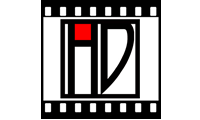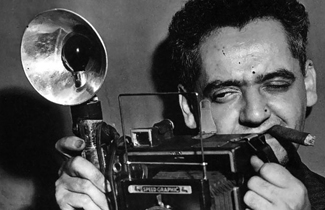Product Description
Weegee, Pole Painter, Gelatin silver print c. 1955


WEEGEE (1899-1968) USA
Pole Painter c. 1955
Gelatin silver print
Signed: Photo by WEEGEE, collection of Suzanne and Hugh Johnston, (stamped in blue ink on back); 208 (in pencil on back); PHOTO BY WEEGEE N.Y.C. (round ink stamp on back)
Provenance: the artist; the Collection of Suzanne and Hugh Johnston (documentary filmmakers who met Weegee in 1956 and worked as colleagues, shooting experimental film footage using Weegee's special lenses)
Size: H: 9 1/8” x W: 8 1/8”
Framed size: H: 15 5/8” x W: 14 ½”
Price: $9,000
Weegee was the pseudonym of Arthur Fellig, an American photographer and photojournalist, known for his stark black and white street photography. Fellig's nickname was a phonetic rendering of Ouija, due to his frequent arrival at scenes only minutes after crimes, fires or other emergencies were reported to authorities. He is variously said to have named himself Weegee, or to have been named by either the girls at Acme or by a police officer. He is best known as a candid news photographer whose stark black-and-white shots documented street life in New York City. Weegee's photos of crime scenes, car-wreck victims in pools of their own blood, overcrowded urban beaches and various grotesques are still shocking, though some, like the juxtaposition of society grandes dames in ermines and tiaras and a glowering street woman at the Metropolitan Opera (The Critic, 1943), turned out to have been staged. In 1938, Fellig was the only New York newspaper reporter with a permit to have a portable police-band shortwave radio. He maintained a complete darkroom in the trunk of his car, to expedite getting his free-lance product to the newspapers. Weegee worked mostly at night; he listened closely to broadcasts and often beat authorities to the scene. Most of his notable photographs were taken with very basic press photographer equipment and methods of the era, a 4×5 Speed Graphic camera preset at f/16, @ 1/200 of a second with flashbulbs and a set focus distance of ten feet. He had no formal photographic training but was a self-taught photographer and relentless self-promoter. He is sometimes said not to have had any knowledge of the New York art photography scene; but in 1943 the Museum of Modern Art included several of his photos in an exhibition. He was later included in another MoMA show organized by Edward Steichen, and he lectured at the New School for Social Research. He also undertook advertising and editorial assignments for Life and Vogue magazines, among others. His acclaimed first book collection of photographs, Naked City (1945), became the inspiration for a major 1948 movie The Naked City, and later the title of a pioneering realistic television police drama series and a band led by the New York experimental musician John Zorn. Weegee also made short 16mm films beginning in 1941 and worked with and in Hollywood from 1946 to the early 1960s, both as an actor and a consultant. He was an uncredited special effects consultant and credited still photographer for Stanley Kubrick's 1964 film Dr. Strangelove or: How I Learned to Stop Worrying and Love the Bomb. His accent was one of the influences for the accent of the title character in the film, played by Peter Sellers. In the 1950s and 60s, Weegee experimented with panoramic photographs, photo distortions and photography through prisms. He made a famous photograph of Marilyn Monroe in which her face is grotesquely distorted yet still recognizable. For the 1950 movie The Yellow Cab Man, Weegee contributed a sequence in which automobile traffic is wildly distorted; he is credited for this as “Weegee” in the film's opening credits. He also traveled widely in Europe in the 1960s, and took advantage of the liberal atmosphere in Europe to photograph nude subjects.
Weegee, Pole Painter, Gelatin silver print c. 1955
BARRY L. THUMMA (1947-2003) USA
Face of America 1980
Gelatin silver print
Size: H: 13 3/8” x W: 11”
Size (with board): H: 14” x W: 11”
Size (framed): H: 21 ¼” x W: 17”
Price: $2,750
Barry L. Thumma, a former New Era photographer, covered four presidents as White House photographer for The Associated Press. In his 20-year career with the AP, he traveled on more than 100 Air Force One flights to photograph presidents Jimmy Carter, Ronald Reagan, George H.W. Bush and Bill Clinton. He also photographed Pope John Paul II, Jerry Falwell, Mikhail Gorbachev, Michael Deaver, Alan Greenspan and Donald Rumsfeld, among other personalities and politicians of his time. He was a member of the White House News Photographers Association. Thumma began his career in 1967 as a part-time photographer for the Lancaster New Era. He joined the Associated Press in 1973 in Cincinnati, where he covered the Reds and the Bengals. After two years as the Ohio photo editor, Thumma moved to Washington, D.C. to cover the White House. He also captured heartbreaking images of the famine in Ethiopia, NASA space flight operations and troop actions in the field.
TIM GIDAL (Ignaz Nachum Gidalewitsch) (1909-1996) USA
Self-portrait 1930
Signed: Tim Gidal, self portrait 1930, photograph printed by photographer TG (script in ink on back)
H: 17 7/8” x W: 12 1/16” (framed)
German-born Israeli photojournalist and writer. Gidal studied law, history and art history in Munich and Berlin, and started photography as a Zionist student. His first published pictures appeared in the Münchener illustrierte Presse in 1929. After emigrating in 1933 he lived in Switzerland (where he wrote a doctoral dissertation on photojournalism), the Middle East, and India, contributing to numerous publications. Between 1938 and 1940 he worked for Picture Post, and 1942-5 for the British army magazine Parade. After moving to the USA in 1947 he was an editorial consultant for Life. He later held academic posts in America and Israel. His many books include Modern Photojournalism: Origin and Evolution 1910-1933 (1973).
